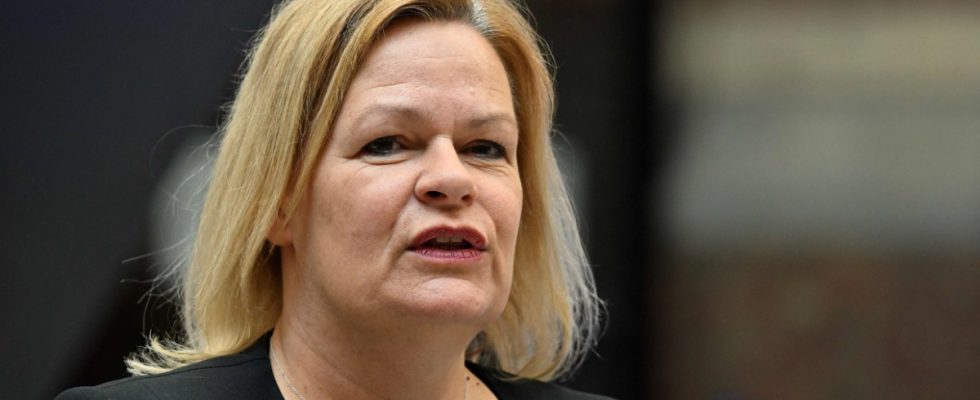A few weeks ago, Federal Interior Minister Nancy Faeser appeared to be presenting herself in Germany as a champion of tougher asylum rules in Europe. In the final phase of the negotiations between the EU member states, however, the SPD politician has to fight for humanitarian standards on behalf of the traffic light coalition. At the meeting of the ministers responsible for migration on Thursday in Luxembourg, she had a difficult time. Early on Thursday evening, German positions even threatened an agreement on the draft legislation.
Faeser insisted that families with children should be exempt from the planned fast-track asylum procedures at the EU’s external borders, as should unaccompanied minors up to the age of 18. Because accommodation in the camps provided for this purpose under conditions similar to detention cannot be expected of them. Many of her colleagues argued that both rules would invite abuse. Faeser seemed to be able to get his way with the minors traveling alone, but not with the families. The federal government will probably have to be satisfied with a memorandum in which the German concern is recorded.
A point of contention: Can people be deported to any country?
The biggest debate in Luxembourg, however, was about the deportation of migrants whose asylum applications are rejected in the first instance in the fast-track procedure. The vast majority of EU governments now demand that these people should be able to be sent to any other country if their home country doesn’t take them back. For Italy in particular, but also for the other Mediterranean countries, this was a crucial point in the negotiations. However, the federal government insisted that there must be some kind of “connection” between the asylum seeker and the country to which he is being deported. A simple transit should not suffice.
Minister Faeser was under the conflicting influences of the Berlin coalition partners. While the Greens attached great importance to humanitarian aspects in the fast-track procedures, the FDP demanded that Faeser should not allow the negotiations to fail because of this. On Thursday evening it was unclear whether the negotiations (which had not yet ended at the time of going to press) would lead to an agreement.
A maximum of twelve weeks for the procedure, a maximum of twelve weeks for the deportation
“Responsibility” and “solidarity” were the two central terms in the negotiations. The states on the external borders of the EU should register all arriving migrants in large asylum centers. Asylum seekers with little chance of success – Europe-wide recognition rate of less than 20 percent – are to be held there until a decision is made on their application. The procedure should last a maximum of twelve weeks, and rejected asylum seekers should be deported within a further twelve weeks. In return, the other states undertake to accept a certain number of asylum seekers.
During his visit to Italian Prime Minister Giorgia Meloni, Chancellor Scholz said he was “confident” that a European answer to the challenge of flight and migration would be found. Meloni called for a “paradigm shift”.
The system of responsibility and solidarity is to be introduced in stages, so it does not initially extend to all refugees arriving in Europe. The plans discussed recently envisaged that the states on the external borders should initially reserve 30,000 places for fast-track procedures. Italy’s government argued to the end that the number was too high. 30,000 asylum seekers are also to be redistributed in the EU each year. According to the key worked out by the Commission, Germany would be faced with 6,000. In addition to Germany and France, however, not many other countries will participate in the redistribution. You can buy your way out with a certain amount of money per asylum seeker. Most recently, there was talk of 22,000 euros.
Before new laws come, the European Parliament must also agree
With the reform, the EU states are pursuing two main goals. On the one hand, the “secondary migration” in Europe, which arises because countries like Italy and Greece feel overwhelmed and send migrants on instead of registering them, is to be curbed, as the rules in force in the EU actually provide for. On the other hand, the number of migrants arriving in Europe should generally be reduced. A qualified majority is required for an agreement, which means that 55 percent of the member states, representing 65 percent of the EU population, would have to vote for the reform.
What the ministers decide does not automatically become law. Rather, the paper discussed on Thursday would only be the basis for negotiations with the European Parliament, which agreed on a position on the existing legal texts back in March. The two EU institutions agreed last autumn to come to an asylum reform before next year’s European elections.

